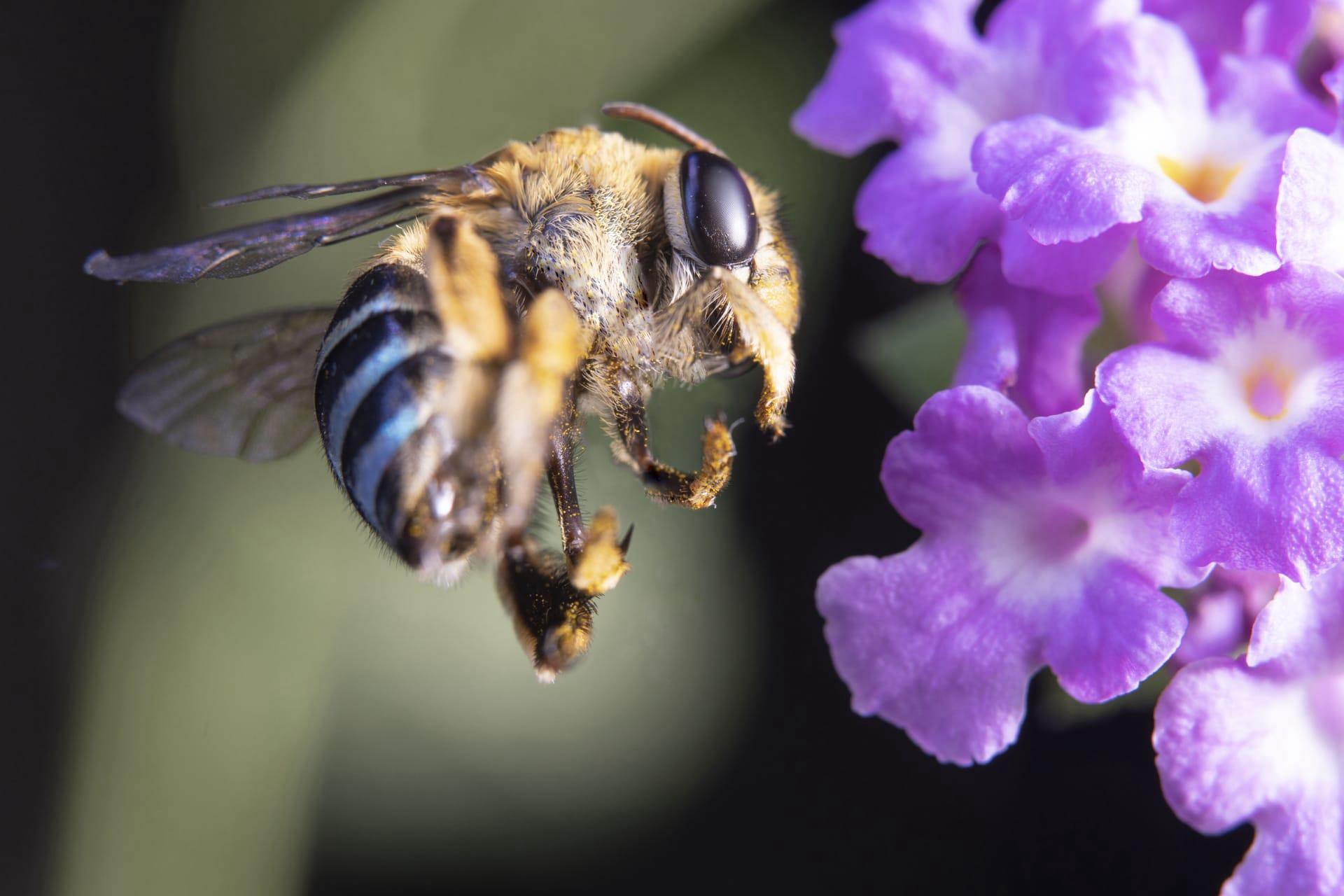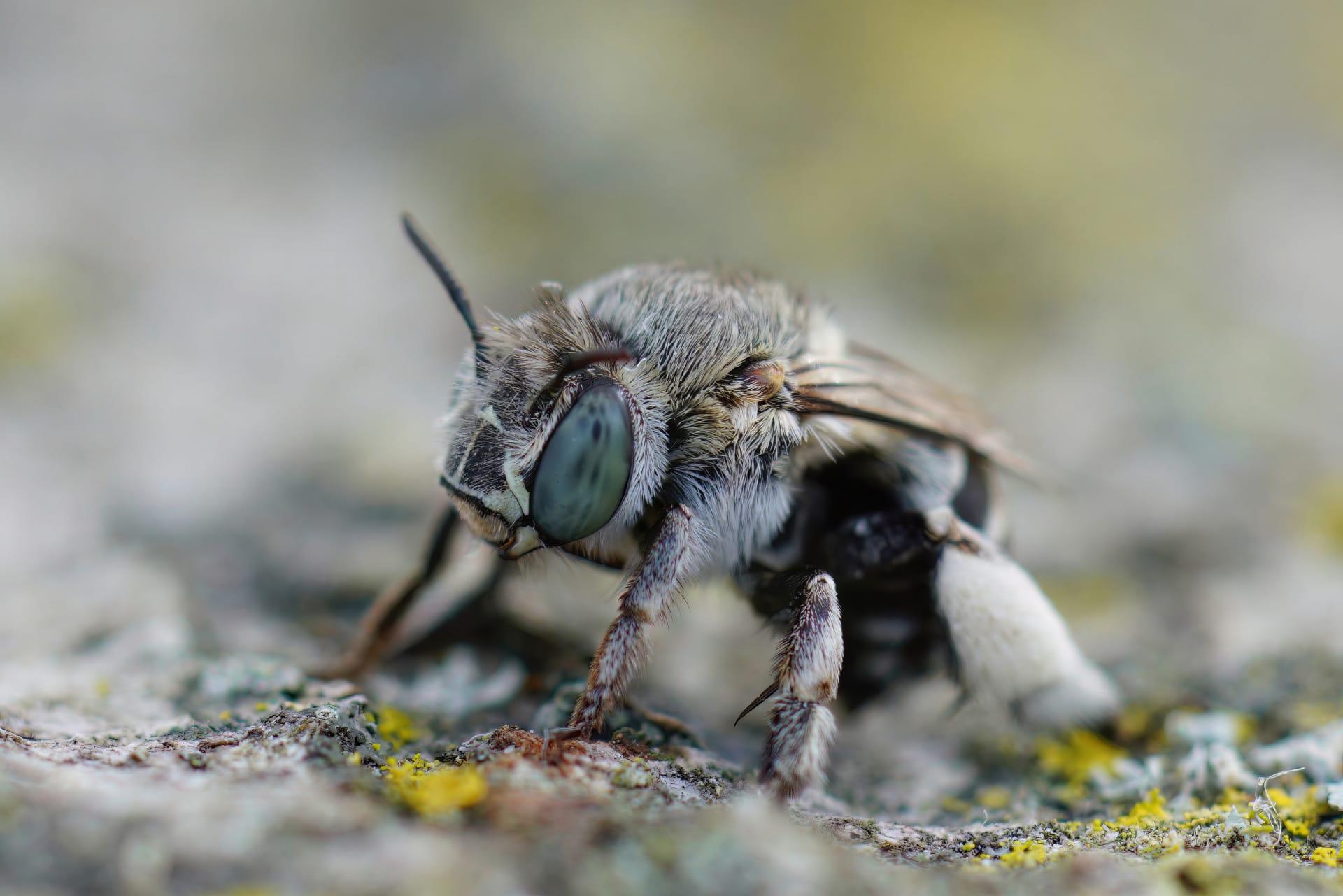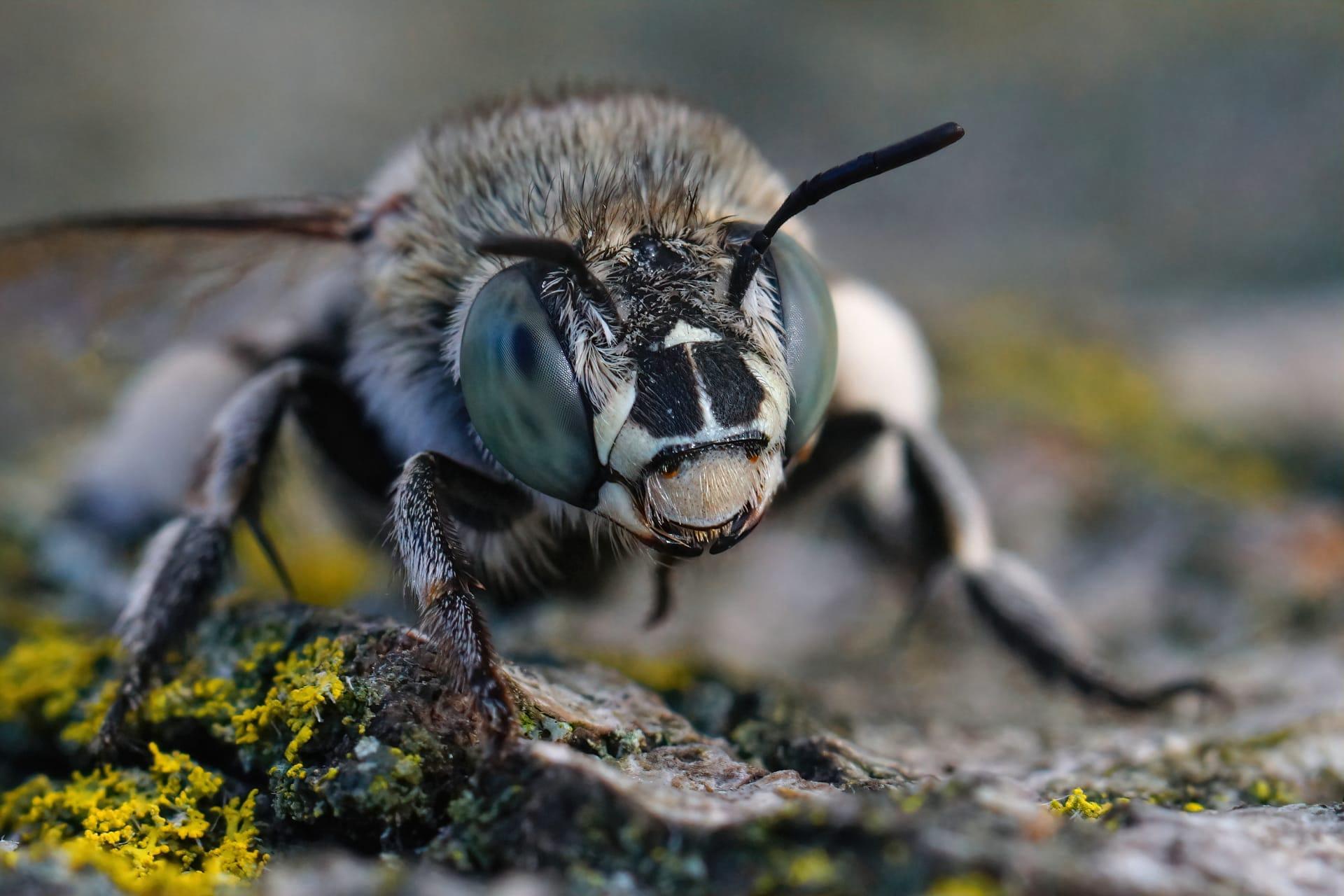1
The Blue Banded Bee, a native species to Australia, Asia, and the Pacific region, is renowned for its striking appearance. These bees, measuring about 11 mm in length, boast vibrant blue stripes across their black abdomens. Unlike the common honeybee, the Blue Banded Bee's stripes are a brilliant metallic blue, making them easily distinguishable. Additionally, these bees exhibit sexual dimorphism, meaning males and females have distinct physical differences. Males have five blue bands on their abdomens, while females have only four. This difference in banding is not just for show; it plays a crucial role in their mating rituals and identification.
One of the most fascinating behaviors of the Blue Banded Bee is their unique method of pollination, known as 'buzz pollination'. This technique is vital for the fertilization of certain plants like tomatoes and eggplants. During buzz pollination, the bee grabs onto the flower and vibrates its flight muscles rapidly without flapping its wings. This vibration dislodges pollen that would otherwise remain trapped inside the flower's anthers. The frequency of these vibrations is incredibly precise, typically around 350 Hz, which is the optimal frequency to release pollen from certain plant species. This method is so effective that some plants have evolved to rely solely on buzz pollinators like the Blue Banded Bee.

2
Blue Banded Bees exhibit a unique nesting behavior that sets them apart from other bee species. Unlike honeybees that live in large colonies, Blue Banded Bees are solitary creatures. Each female bee builds her own burrow in soft sandstone, clay, or even mud-brick walls. These burrows can be up to 10 cm deep and are meticulously constructed to house her eggs. Inside these nests, the female bee forms individual cells using mud. Each cell is provisioned with a mix of nectar and pollen, which serves as food for the larva once it hatches. The mother bee lays a single egg in each cell and seals it off, ensuring the safety and nourishment of her offspring.
Another intriguing aspect of the Blue Banded Bee is their ability to thermoregulate, a rare trait among bees. These bees can control their body temperature, allowing them to thrive in varied climates, from the hot tropics to cooler temperate regions. On colder days, they can increase their muscle activity to generate heat, which helps them to remain active when other bees would typically be dormant. This thermoregulation is crucial for their survival and enables them to forage for longer periods, giving them an advantage in areas with limited resources or shorter flowering seasons.

3
Blue Banded Bees are not only skilled pollinators but also play a critical role in maintaining ecological balance. They are known as 'keystone species' in their native habitats, meaning their presence and activities have a disproportionately large impact on their ecological community. For instance, their specialized buzz pollination technique is essential for the reproduction of certain plants, which in turn provide food and habitat for other wildlife. The loss of Blue Banded Bees could lead to a decline in these plant populations, adversely affecting the entire ecosystem.
In addition to their ecological importance, Blue Banded Bees have a unique flight pattern compared to other bees. They exhibit a rapid, darting flight style, interspersed with hovering, similar to a hummingbird's flight. This agile flying ability allows them to access nectar and pollen from a wide variety of flowers, some of which are inaccessible to other bee species. Their wings beat at a remarkable speed, approximately 50 times per second, which is not only necessary for their distinct flight pattern but also contributes to the effectiveness of their buzz pollination technique.

4
The lifespan of the Blue Banded Bee is another point of interest. These bees have a relatively short life cycle, with an average lifespan of just 40 days. During this brief period, they undergo the complete cycle of mating, nesting, and pollinating. The females invest a significant amount of their time and energy in constructing their nests and provisioning them with food for their future offspring. This short lifespan highlights the urgency and efficiency with which these bees operate, contributing significantly to their environment in a limited time.
Blue Banded Bees also have a distinctive approach to resting. At night, male Blue Banded Bees exhibit a behavior known as 'roosting'. They clasp onto plant stems or twigs using their mandibles and hang there throughout the night. This behavior is not only a resting strategy but also a social one, as males often roost together in groups. This communal roosting provides safety in numbers and plays a role in their mating strategy, as it helps them to conserve energy and stay protected from predators during their vulnerable resting state.

5
Communication among Blue Banded Bees, although not as complex as in social bee species, is still an essential aspect of their behavior. These solitary bees rely on chemical signals, or pheromones, to communicate. Females release specific pheromones to attract males for mating. These chemical cues are crucial for the continuation of their species, as they ensure that males can locate females for reproduction despite their solitary nature.
The diet of the Blue Banded Bee is quite specific and plays a role in their habitat preferences. They primarily feed on nectar and pollen from flowers, with a particular preference for certain plant species. This dietary specificity influences the types of flowers they pollinate and thus impacts the floral diversity in their environment. Their preference for certain plants can lead to increased plant diversity in areas where these bees are active, as they effectively pollinate and help propagate these preferred species. This, in turn, supports a diverse range of other wildlife that depends on these plants for food and shelter.